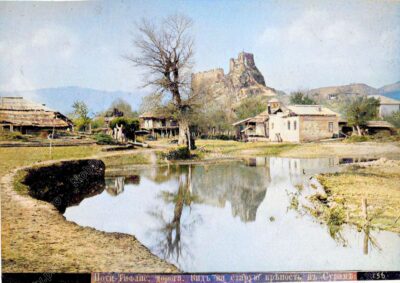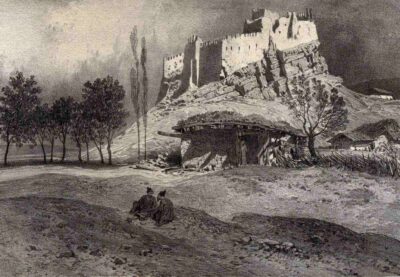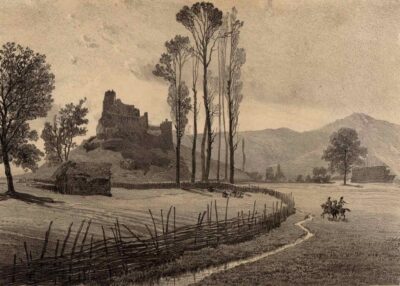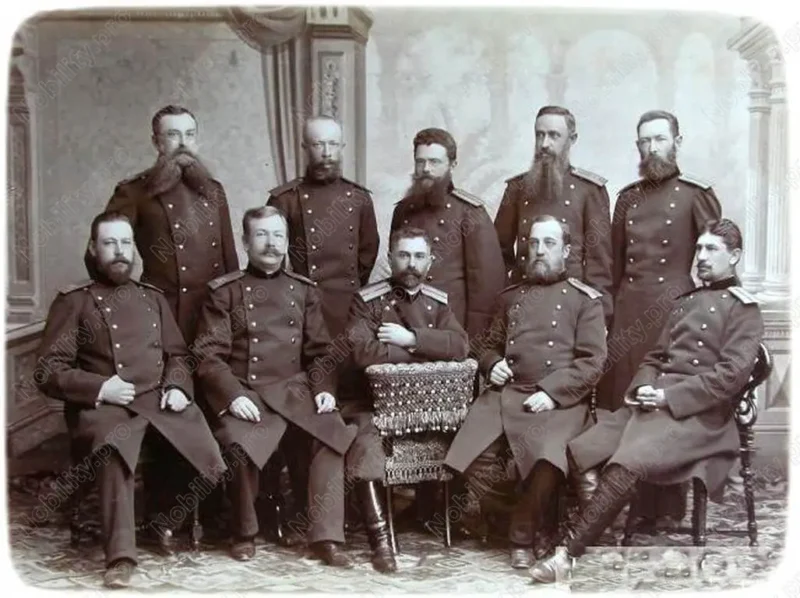The Middle Ages look down the earth through fantastic grandeur of Surami Fortress, set on a high rock on the left bank of the Suramula River in the northern part of the town of Surami, Khashuri Municipality, Shida Kartli. Nobody knows what create the legendary mightiness of its walls – the real construction or the myth which was snatched by the fantasy of Daniel Chonkadze and was turned into eternal grief of the mother of Zurab, who had been bricked up within the walls.
This monumental piece of art is situated at the juncture of two main roads. One leads to the west through Likhi passes, while the other goes south through the Borjomi Valley. The fortress is a complex which comprises the wall-fortress, the church of St. George, a tower and a palace. According to tradition, the fortress was connected to the church of the Ascension and the River Suramula, from where drinking water was supplied to the fortress.
Nobody knows when exactly the fortress was built, no historical records have been found. According to Platon Ioseliani, Surami and its fortress were built by King Parnajom in the first half of the second century BC, 200 years prior to Christ’s birth. Georgian historical sources refer to Surami Fortress as a strategic point from 1625, when Giorgi Saakadze reinforced it with the aim of defending it from Persians.
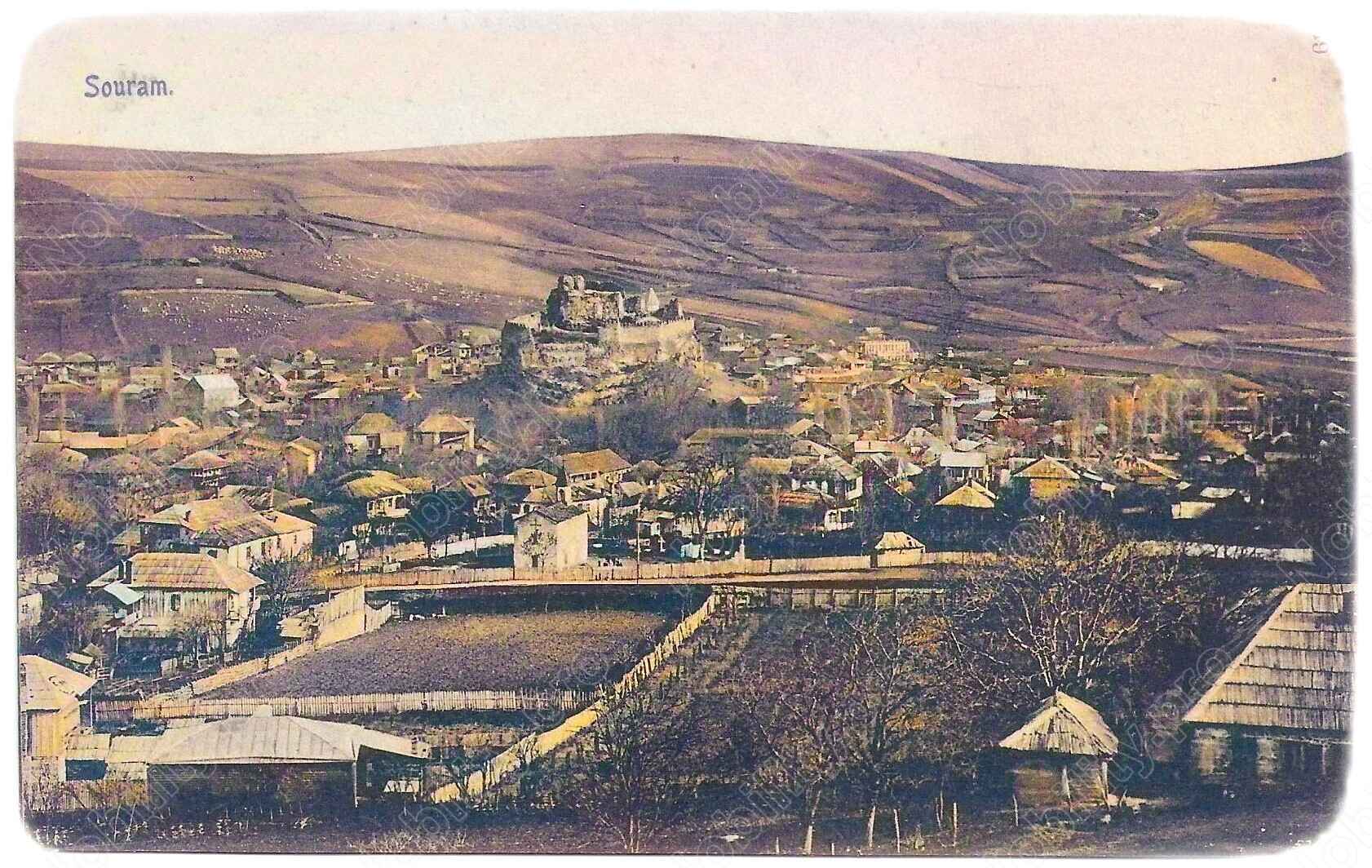
In the 18th century, during the rebellion against the Persians, Surami Fortress became the main military base of Givi Amilakhvari, head of the military district of Kartli. The enemy failed to capture the fortress – the explosive force of the shells bombarded on the fortress did not work. As tradition has it, the Shah was so surprised by sturdiness of the walls that he sent an artist to draw the fortress. When he saw the picture, he commanded: “Build a fence around it so that nobody can enter or leave it and keep it besieged until those trapped there beg us to release them…”
Later they exploded the fortress twice and a major part of the wall collapsed. On Nadir Shah’s order they destroyed the fortress. However, the Georgians restored it soon. In 1772 King Erekle II’s testament refers to Surami Fortress as the highest of all the fortresses. According to the sources of 1801, the fortress still operates. Like other Georgian fortresses, it lost its strategic importance in the 19th century, but the medieval epoch incarnated in it is still bustling.
What is Surami fortress like? It represents Zurab, bricked up within its walls, and looks as handsome as he did. Generally, it is a legendary fortress of legends. They say there are mother’s tears still leaking drop by drop from the wall Zurab was bricked up. They also say that during a full moon a woman wrapped in black comes out and calls upon the ruins of the fortress crying: “Surami Fortress, my son Zurab is there and keep him safe”.
What can be said about it? It is possible that there really existed Zurab and its equipoise evil, too, but no trace has been tracked here so far; however, we, archaeologists, do not touch the walls, we are dealing with the underground world. The legend about Zurab could be an example of the narrative of the world’s brutal mythology which tells us about the castles built with human bones and other gruesome marvels of this kind. But where is in this case the invincible goodness which is eternal? In connection with Surami Fortress this goodness is its legendary invincibility.
Surami has a strategic situation. Given the fact that it is mentioned in ancient sources and that in 1856 an Achaemenid silver siglos of the sixth-fifth centuries BC was discovered here along with a Colchian tetri, it is presumable that Surami must have been inhabited since the fourth century BC. Factual material evidencing this opinion is rather sparse presently, but the area has yielded Colchian axes, as well as the material of the Late Bronze-Early Iron Age.
Surami used to be one of the block points of Zemo Kartli, it could have been custom-house too, i.e. Ali Castle blocked the northern road, Tashiskari – the southern one and Surami the western one. The routes running through Surami conditioned the development of its pre-urban period. All these need to be investigated, as nobody knows the exact date of construction of the fortress, it is not given in historical sources. The church of St. George is dated to the 12th century, therefore, it is presumable that the fortress was established here in the 12th -13th centuries.
In the 20th century Surami used to be a very popular resort and its dry climate and medicinal mineral water can easily challenge any of the legends. Surami Fortress provides an excellent view over the attractions of the region and the fortress can be seen from any part of Surami… Therefore, travelers can hardly pass by indifferently and leave the area without visiting the fortress.
